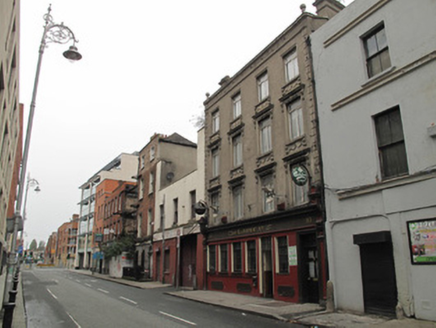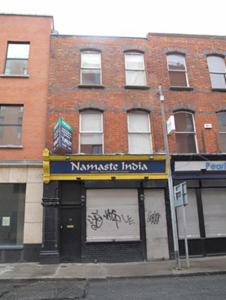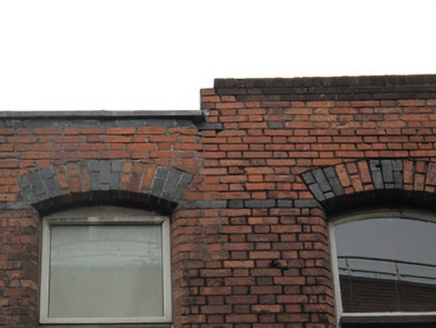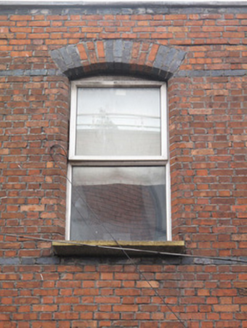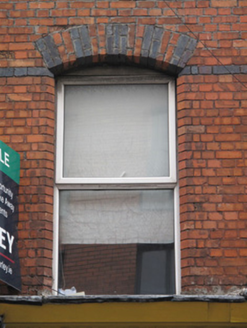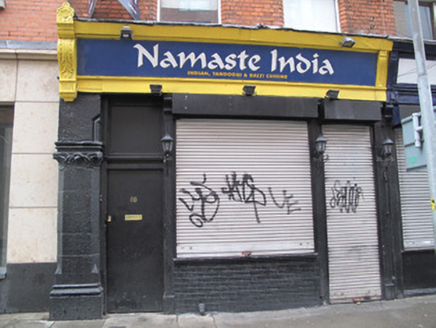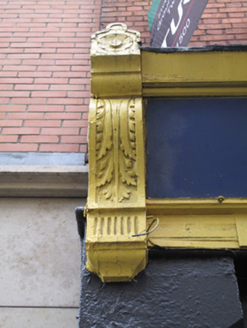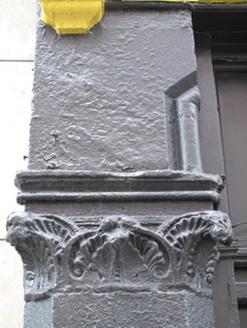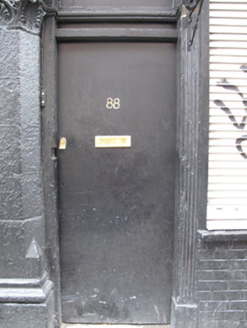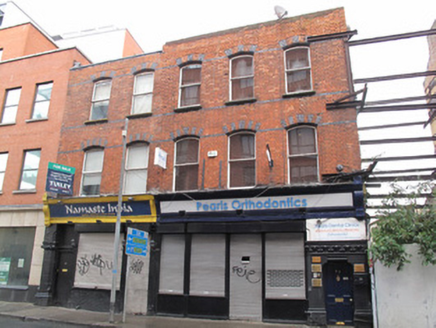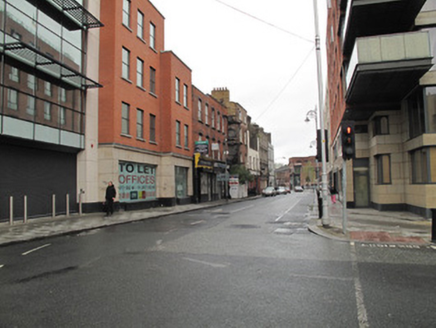Survey Data
Reg No
50070198
Rating
Regional
Categories of Special Interest
Architectural, Artistic, Social
Original Use
House
Historical Use
Shop/retail outlet
In Use As
Restaurant
Date
1875 - 1880
Coordinates
314652, 234651
Date Recorded
29/10/2012
Date Updated
--/--/--
Description
Terraced two-bay three-storey house, built 1876, having shopfront to front (south) elevation. Now in use as restaurant. M-profile pitched slate roof, hipped to rear, hidden behind red brick parapet with aluminium-covered coping and black brick string course. Red brick walls laid in Flemish bond, black brick platbands at sill level to second floor, and at impost level to first and second floors. Segmental-arched window openings having red and black brick voussoirs, chamfered surrounds, painted masonry sills and replacement uPVC windows. Shopfront comprising painted masonry pier, with chamfered corners and carved capital, to west, fluted timber pilasters supporting timber fascia and overhanging cornice. Scrolled timber console to west, smaller fluted console to east. Square-headed door and window openings having steel shutters, painted masonry sill and painted brick riser to window. Square-headed door opening to east of shopfront, timber door and blocked overlight.
Appraisal
Thom’s Directory of 1850 lists the building on this site as the premises of James McDonnell, baker. In 1876, this and its neighbour at No.87 were subsumed into a new grocery premises for Laurence Egan, by O’Neill & Byrne, and the shared shopfront and common features to the upper floors of the two buildings are still evident, although they have since been separated, and their parapet heights adjusted. The shared fenestration pattern and decorative black brick string courses present a unified façade, making a positive impression on the streetscape. The building is distinguished by its shopfront, which is of high quality design and execution, and of a type which is becoming increasingly rare in Ireland. Skilful craftsmanship is apparent in the carved masonry capitals and timber consoles.
